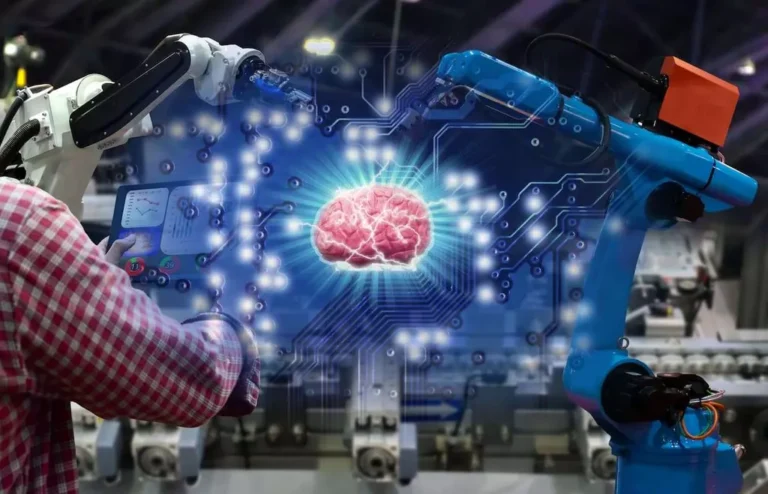You should carry out rigorous QA and testing to hand over the best-quality software. Thus, by conducting the testing part, the companies can catch up with bug-free and flawlessly performing system. The System Improvement Life Cycle (SDLC) is a well-structured technique to plan, construct, and deploy information methods. The actual coding begins on this section, where developers write, combine, and take a look at the software’s functionalities. An existing system is changed by a brand new system that consists of changed elements or modules to ensure that it meets new necessities.
- Iteration allows quicker improvement of methods by shifting ahead with improvement without requiring full specs upfront.
- Any present knowledge that’s being retained from a previous system will be migrated to the new system.
- Once a system has been stabilized via testing, SDLC ensures that proper training is ready and carried out before transitioning the system to help employees and finish users.
- The development marks the top of the preliminary part of the method and signifies the beginning of the manufacturing.
Throwaway prototypes create replicas of the software program that can eventually be discarded whereas evolutionary prototypes create a robust duplicate that can repeatedly be refined till it reaches its ultimate version. This consists of all the specifications for software, hardware, and network necessities for the system they plan to build. This will stop them from overdrawing funding or sources when working on the identical place as other development teams. SDLC is a well-structured course of LSTM Models that permits the steerage of development in data techniques in terms of a series of well-defined stages.
Waterfall is a linear strategy under which developers work on clearly defined systems growth life cycle phases. Underneath the waterfall model, scope change is undesired and requires project re-estimation. In order to understand the idea of system development life cycle, we must first outline a system. A system is any data technology element – hardware, software program, or a mixture of the 2. Each system goes through a improvement life cycle from preliminary planning by way of to disposition.
They will have to consider the proposed layout to see if it helps the corporate achieve its primary objectives. The aim of this stage is to define the full extent of the issue and generate potential answers. Costs, advantages, time, cash, and so forth are all related elements to consider. To guarantee the overall success of the project, this is the most important stage.
Even so, some estimate is often higher than no estimate in any respect, as a end result of it helps with the planning of different elements of the project, together with scope and sources. In the Evaluation section, the main target is on understanding and documenting the system’s necessities. This involves gathering input from stakeholders, reviewing present processes, and identifying the system’s needs. The information collected forms the idea for developing a system that addresses both user expectations and organizational challenges.

Massive Bang is a high-risk method that ought to be prevented for initiatives of great measurement or complexity due to the possibility that the project will have to be restarted if initial needs are misinterpreted. As Soon As a stage is full, there could be minimal room for change, thus problems can’t be addressed until the maintenance section begins. The necessity for adaptation or the persistence of the project just isn’t an excellent match for this paradigm. In contrast to other structured SDLC approaches, Waterfall’s strategy to completing each stage earlier than transferring on to the following is the best and most time-tested.

System Evaluation
Methods analysis and design (SAD) could be thought-about a meta-development activity, which serves to set the stage and bound the problem. Structure, and enterprise structure, and relies heavily on ideas corresponding to partitioning, interfaces, personae and roles, and deployment/operational modeling to arrive at a high-level system description. This high-level description is then damaged down into the components and modules which could be analyzed, designed, and constructed individually and built-in to accomplish the enterprise aim. SDLC and SAD are cornerstones of full life cycle product and system planning. Every hardware or software program system goes by way of an iterative improvement course of with a number of steps, with each part encompassing a sure set of actions and duties. In this section, the precise coding and development of the system take place.
Operations And Upkeep
With a structured approach in path of the systems development life cycle, organizations are able to make effective use of sources and keep away from pointless expenses. This assures that the project remains inside the finances, and there could probably be higher monetary planning. For many projects, the methods development life cycle contains the narrower software growth lifecycle. In other words, the methods growth life cycle is a superset of the software growth lifecycle. The SDLC creates a systematic construction and reusable framework to define the assorted steps concerned within the growth of a system.
Utterly defined in 1971, the term originated within the https://www.globalcloudteam.com/ Sixties when mainframe computers crammed whole rooms and a pressing want developed to define processes and equipment centered on constructing massive enterprise techniques. In those days, groups have been small, centralized, and users had been ‘less’ demanding. This kind of scenario meant that there was not a true need for refined methodologies to drive the life cycle of system development. However, technology has evolved, systems have become more and more advanced, and users have turn into accustomed to well-functioning expertise.
It breaks the process into distinct phases, ensuring that every step is planned, monitored, and optimized for effectivity. A methods development life cycle, or SDLC, is a set of steps that can be used by a staff creating a brand new info know-how system. It is a selected plan that guides the team members as they come up with the thought for the system, evaluate it, design it, build it, and put it into use. Most corporations and organizations that design systems use these steps to make sure the final system is environment friendly, meets all of the meant objectives, and has the greatest possible probability of success.
With its customizable spreadsheet interface and highly effective collaboration features, Smartsheet permits for streamlined project and course of management. Use Smartsheet’s SDLC with Gantt template to get began shortly, and help manage the planning, growth what is the systems development life cycle, testing, and deployment stages of system growth. Create a timeline with milestones and dependencies to trace progress, and arrange automated alerts to inform you as something changes.
Conceptual Design
Builders build the system in accordance with the design specifications, implementing features, creating databases, and writing code. This phase additionally consists of initial inner testing to ensure the system features as expected and adheres to design and functional requirements. It integrates growth and safety teams with a shared investment in the project to safeguard the software program software directly.
The analysis stage consists of gathering all the particular particulars required for a brand new system as nicely as determining the primary concepts for prototypes. By growing an effective define for the upcoming improvement cycle, they’ll theoretically catch issues before they have an effect on growth. Explore how to implement safety practices seamlessly inside your growth lifecycle. Clearly collate and doc all requirements in sufficient detail to keep away from ambiguity and scope creep.
Setting a robust basis and defining a clear understanding of a project is essential to the success of any data system. For this cause, the SDLCs first phase is planning where stakeholders and all parties concerned in the project participate to obviously define requirements and the character of what the data system will want to remedy. Maybe essentially the most famous Agile methodology, Scrum, initiates little development cycles, generally known as sprints. Centered on collaboration, accountability, and iterative progress toward well-defined goals, regular evaluate and adaptation follow swimsuit.
The SDLC provides a structured approach to software improvement, making certain tasks are well-planned, executed effectively, and meet stakeholder expectations. Before embarking on any project, it’s important to define its scope clearly. This entails outlining goals, deliverables, tasks, deadlines, and sources required for profitable completion. The starting stage units the foundation for the entire project and ensures alignment with enterprise aims. In the realm of software engineering and project administration, understanding the system improvement life cycle (SDLC) is essential for successful project delivery. The SDLC consists of 5 fundamental levels, each taking half in a pivotal function within the development and deployment of techniques.
Laisser un commentaire